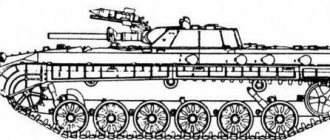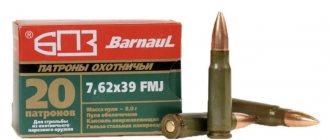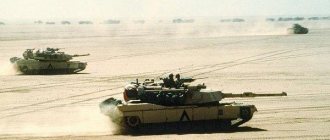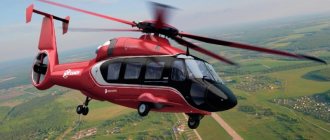Military drones have received a lot of attention over the years, but few people get them right. Yes, most descriptions of them accurately describe how they are used in battle, but just as often these stories give a false impression, ridiculous and not supported by facts. For example, almost everyone calls a military unmanned aerial vehicle (UAV) a drone, but this is a misconception that insults their pilots (yes, they have pilots). Here are ten of the most common misconceptions about military drones.
Many people have no idea how military drones work (and by the way, these are not drones)
What is a military drone?
This is more correctly called a drone
The word "drone" is often associated with a quiet buzzing sound, which is why male bees are called drones. But using the word “drone” to describe a complex system deployed on a modern battlefield is ludicrous and insulting to its operators.
"Drone" implies no input from an expert operator, so the term is not widely used by the military. Outside of the military, the word "drone" is more often associated with quadcopters, small remote-controlled aircraft that enthusiasts use for a variety of activities, including quadcopter racing, aerial photography, and just plain fun.
C-Worker 5
Not only airplanes, but also sea vessels are becoming unmanned. The UK presented its C-Worker 5 boat, capable of developing low speed, but staying on one fuel tank for a whole week. The ship is planned to be used for reconnaissance and trawling; in extreme cases, it can be blown up remotely and cause something like sabotage.
When did they start using UAVs?
They have been in service for a long time
UAVs are not new to military weaponry, but it may surprise you to know that they were first used back in the 19th century! Austrian troops attacking Italy in 1849 approached Venice armed with 200 balloons. These balls were equipped with bombs with installed synchronized fuses. Their success was not complete, as many of the balloons were blown back to the Austrian front line, but some still achieved their goals. This is the first example of the use of an unmanned aerial vehicle in military operations.
Since then, remotely controlled vehicles have been developed and used in many armed forces of different countries. Until GPS became a widespread technology that made it possible to control devices from a satellite anywhere in the world, they were controlled using a radio channel.
The weak point of attack drones: why are they not afraid of them in Russia?
The massive debut of the combat use of Turkish strike drones (hereinafter we mean guided munitions in the form of unmanned vehicles), which took place in Libya several months ago, certainly did not pass the attention of specialized specialists.
It must be admitted that the high efficiency demonstrated by attack unmanned aerial vehicles (UAVs) did not come as a big surprise to military professionals.
Strikes on the positions of the Libyan National Army (LNA) by Turkish unmanned aircraft caused a serious shock of losses on the enemy side. This, however, did not bother the foreign military experts supervising the Libyans, who developed a number of new recommendations and introduced them to the troops. Thus, they achieved a sharp reduction in losses among personnel.
Prt Scr youtube.com / مكتب الاعلام — القيادة العامة للقوات المسلحة الليبية
First of all, the essence of these proposals, which reduced the effectiveness of combat UAVs, boiled down to the long-known military rule - not to allow accumulations of forces and means. Every infantryman knows that during an attack it is forbidden to form groups under any circumstances. This is explained by the fact that the most effective fire is achieved when shooting at a group target. The second factor that strengthened the defense against enemy drones was the acquisition by the LNA of modern electronic warfare (EW) systems.
The “second coming” of Turkish (and not only) attack drones occurred during the Nagorno-Karabakh conflict. The Azerbaijani side, interacting with Turkish military specialists, is actively using guided munitions, which have proven effective against positional and maneuvering objects. In this conflict, the attackers used a variety of unmanned vehicles, including converted Soviet-built An-2 aircraft.
Prt Scr youtube.com / Internet FON EU
Against the backdrop of these events, observers began to actively discuss the effectiveness of attack drones. The idea has become popular that drones have made a real revolution in military affairs.
There was an opinion that the Russian army does not have such weapons in principle. Based on this, it is assumed that if the RF Armed Forces participate in a modern armed conflict, they could allegedly suffer heavy losses.
I cannot agree with this statement for the following reasons. For all the apparent effectiveness of strike UAVs, it should be taken into account that both in Libya and in Nagorno-Karabakh they were used against military equipment of past generations.
press service of the Russian Ministry of Defense / mil.ru
The effectiveness of drones in this case was due to the virtual absence of counteraction. If we are talking about air defense, then indignation about the ineffectiveness of the short-range anti-aircraft missile systems (SAM) “Osa” or “Strela-10”, which are in service with the Artsakh army, is meaningless, because we are talking about qualitatively different things.
These air defense systems were created more than 40 years ago, when even the most advanced design ideas could not even imagine the appearance of attack UAVs. For this reason, these complexes did not include the ability to see and track such a target.
Federal News Agency / Andrey Tyunnikov
On the other hand, if the use of attack drones is carried out against modern forces and means, then the situation changes radically. This can be confirmed by reports periodically appearing in the media about the successful repelling of attacks by combat drones on Russian military bases in Latakia and Tartus, covered by the Pantsir air defense system and various electronic warfare systems.
There is no need to worry about the lack of such weapons in the hands of the Russian military, since the RF Armed Forces have much more effective weapons.
Let's start with the fact that the Russian Army currently has about two thousand UAVs of various models and purposes in service. Their functionality includes the ability to conduct reconnaissance, adjust fire, intercept various enemy signals and suppress them. Yes, there were reports in the media about the entry into service of the Russian army of attack unmanned vehicles of the Orion type. Although there was no urgent need for vehicles of this class in the Russian army, their adoption can only be welcomed.
Federal News Agency / Andrey Soyustov
The fact is that the structure of the RF Armed Forces was formed to solve not only tactical, but also more significant operational and strategic tasks. Their decision may, I dare say, end the existence of human civilization. Not to mention local skirmishes—for this purpose, appropriate weapons have been created and supplied to the troops.
The two thousand drones available in the Russian Armed Forces allow the troops to almost completely control the theater of military operations. All UAVs are included in a single combat control system; they work according to a single plan in order to achieve established goals.
mil.ru / Press service of the Russian Ministry of Defense
When they detect enemy targets, the drones begin to adjust the fire of the strike weapons available to the troops. This could be artillery, tactical missiles, attack helicopters, front-line aviation. For a clearer understanding, I will describe a typical task.
Let us assume that radio reconnaissance has revealed the presence of a concentration of enemy forces in a certain area. An unmanned vehicle is heading there. Having detected targets, the UAV provides target designation (target coordinates), for example, to the firing position of self-propelled howitzers. For example, they throw guided projectiles at specified coordinates, the adjustment of which is carried out from a gunner drone.
The accuracy of such projectiles is the same as the widely replicated hits of kamikaze drones. If the target is more worthy, bombers can be called upon to attack it, which have been showing excellent combat results in Syria for the past five years.
press service of the Central Military District /
If the target is very important, then an Iskander or Caliber can be thrown at it. The saturation of modern troops with firepower is very high - despite the fact that they are much more powerful than those drones that “revolutionized military affairs” in recent conflicts.
Let's say, a typical battalion-tactical group operating on the offensive will be supported by a pair of artillery batteries, modern air defense systems and, of course, electronic warfare systems. In addition, suppressive actions will be carried out against enemy drones by “senior commanders” - more on this below.
youtube.com / Russian Ministry of Defense
And now the main thing: the high effectiveness of attack UAVs in Libya and Karabakh is due to the complete lack of fire impact at their control points, which was simply unattainable for the defending armies.
It is impossible to imagine a situation in which such control points would not be suppressed if the Russian, or, say, American army entered the battle. Such actions have been practiced in various exercises for many years, and are not something new for the armed forces of developed countries.
wikipedia.org / Vitaly V. Kuzmin
At the same time, of course, the introduction of such weapons to the battalion or even company level is only a matter of time. Technology does not stand still. It is possible that very soon the infantryman’s belt will not have a tube of a rocket-propelled assault grenade, but something similar, but more manageable.
At the same time, ground forces will likely receive protection against attack drones and loitering munitions. For example, in Russia, work is being completed to modernize the Pantsir air defense system, as a result of which it will be able to detect small UAVs, as well as the ammunition necessary to destroy such targets.
Four such small missiles can be installed in the existing standard location of one missile. A simple calculation allows you to imagine how much ammunition of such shells can be carried on one Pantsir.
Who controls the drone
One of the biggest downsides to manned aircraft is the overall number of people required to fly them. We need pilots, co-pilots, crew on board and others, depending on the type of transport. You also need people to fuel the vehicle, move it, maintain and repair it, and even store it when it's not in use.
Drones can't fly without people yet
Drones, in fact, are not very different. Moreover, they sometimes require even more people to operate them than most manned vehicles. In addition to the people who maintain and operate the craft, there are operators for every sensor and camera on board. For comparison, an F-16 requires about 100 people to operate, a Predator requires 168, and a Reaper requires 180. But these are American UAV systems.
Fighting drones
Despite the potential enemy's superiority in the design of attack drones, Russia is capable of successfully countering faceless killers with the help of the most modern air defense systems. It would not be a mistake to say that in this area our state is head and shoulders above potential adversaries, since a developed layered air defense system allows us to destroy enemy UAVs with almost one hundred percent probability even before they appear in the missile launch zone.
It should be noted that the fight against enemy drones can be carried out in two ways: with the help of anti-aircraft missile systems and with the help of electronic warfare systems.
The first method involves the timely detection and destruction of a drone by a missile or missile-gun attack. For these purposes, Russia is armed with: long-range air defense systems S-300 Favorit and S-400 Triumph, medium-range air defense systems Pantsir-S1 and Tor, and even MANPADS of the Verba type. All of the listed models of modern weapons are capable of effectively combating UAVs of various classes, destroying them with a high degree of probability.
The second method takes advantage of one of the disadvantages of drones - their dependence on commands coming from the control center. Russian electronic warfare systems, such as POLE-21E and Krasukha, are capable of providing radio cover for strategically important targets by jamming. Let us recall that it is “Krasukha-4” that has been defending the Russian Khmeimim airbase in Syria from militant drones since 2015, and very successfully.
Drones rarely crash
Operating any military vehicle is an expensive proposition, and in this regard, UAVs are not much different. However, UAVs have a serious problem: they often crash. Of course, it is better to lose an unmanned vehicle than a manned one, because in the first case there is no need to search and rescue the pilots. However, the military does not really like it when their technology falls into the clutches of the enemy, so crashed UAVs also often require a mission to retrieve the debris or completely destroy the fallen vehicle.
There are also unpleasant incidents
Since 2004, the number of UAV accidents has been steadily increasing, possibly due to increased operational hours and general fatigue of systems that were actively used in Afghanistan and Iraq. In 2004 there were only nine accidents, and in 2012 there were already twenty-six. Many accidents are the result of hostile actions aimed at destroying the craft, and many more fall from the skies for unknown or unspecified reasons.
Disadvantages of drones
With all its advantages, a drone is still not the most ideal aircraft. And in order to completely replace aircraft, the two most important problems of such machines will have to be solved:
- Low speed. The lower the speed, the easier it is to shoot down the UAV. In addition, it is easier to detect it on radar.
- Low autonomy. Most unmanned vehicles are not capable of staying in the air for more than a few hours.
The main disadvantage is the ease of detection. In addition, if the drone is not autonomous, that is, it is not controlled by the algorithms embedded in its program, but carries out its flight through remote control with the help of operators, then all signals can be intercepted by the enemy. This means that it will be taken under control and destroyed, or used by the enemy for his own purposes.
When talking about military and civilian drones, we also shouldn’t forget about completely harmless things designed to make leisure time more enjoyable and richer. For example, Nerf develops toy copters for children.
And very soon, different countries are planning to create postal drones that deliver goods directly to your home. This suggests that even something that was created as a weapon can benefit society. It all depends only on what goals humanity considers to be priority.
(
1 ratings, average: 4.00 out of 5)
What does it take to make drones fall?
Most UAVs use satellite communications, which are difficult to disrupt. It is very difficult, almost impossible, to confuse them from the ground, since their entire connection goes upward in a thin beam. If the drone’s communication systems are disrupted, it switches to autopilot until it restores communication with the operator.
The drone will not fall if its connection is simply cut off
Commercial drones are much easier to confuse because their communications are based on radio, so increasing the energy on their operating frequency will typically cause communications to fail. When it comes to military unmanned aerial vehicles, things are much more complicated.
Intentionally disrupting communications is a dangerous undertaking because it requires a large amount of energy to operate the equipment. Various setups already exist, and people make their own projects like "rifles" when they want to shoot down a commercial drone, but we do not recommend using them.
CH-5
A Chinese development, which can easily be called a modified clone of the American “Reaper of Death”. The UAV was created by the military corporation China Aerospace Science and Technology and has already been tested in combat conditions. The drone is equipped with two new types of ammunition (which ones are not yet known) and a laser guidance system.
How long can a drone stay in the air?
This misconception may be due to the relatively short duration of flights that commercial drones and drones can support. Most quadcopters can stay in the air for 15 minutes, and very few can stay in the air for twice as long. The main reason for this is energy storage and consumption. Most commercial drones are small and powered by an onboard battery. Almost all UAVs, however, carry fuel like a regular aircraft. Therefore, they can stay in the air much longer than their civilian counterparts.
US Air Force Eagle drones
The Predator, one of the most used UAVs in combat, can stay in the air for 27 hours. The Russian equivalent, Dozor-600, designed to serve similar purposes (currently in development), can remain in the air for up to 30 hours. Global Observer Stratospheric Persistent recently developed a UAV that can stay aloft for up to 168 hours due to its high operating altitude (20,000 meters) and the use of liquid hydrogen as fuel.
History of military drones
Aircraft began to be used for combat operations back in the 19th century. The first ancestor of modern combat drones is considered to be balloons for dropping aerial bombs. The development of unmanned aerial vehicles began in the 30s in the USA, and the Second World War gave a new impetus to the development of technology.
At that time, the Americans had a project to re-equip B-17 bombers, which would allow them to be controlled remotely via a radio signal. The plane could not take off on its own - this required a flight mechanic and a pilot, who then ejected from the board.
The unmanned B-17 was followed by an escort aircraft, from which the drone was controlled via television and radio communications. 17 vehicles were converted, of which only one completed the task. After this, the project was closed and did not return to it until the mid-60s.
The British also tried to use drones during World War II. They created the Interstate TDR-1 torpedo bomber, designed to destroy enemy ships. In 1942, tests were carried out and it was ordered to create 18 attack squadrons of 1000 vehicles. However, the enemy fleet was soon destroyed by conventional aircraft, and therefore the need for such developments disappeared.
Can anyone fly a drone?
No, it's much more complicated
While there is a common belief that a good gamer (a person who plays video games) can be a good UAV operator, it doesn't necessarily work the other way around. Most UAVs will deny this and many of them have even written down in detail and explained why the control of the device has little to do with a video game. Most UAVs in military service are difficult to fly, like any other aircraft, and require a well-trained and qualified pilot. Some games may duplicate this to some extent, but very few people good at Microsoft Flight Simulator will be able to sit in a cockpit for eight hours without a break.
If you are interested in science and technology news, subscribe to us on Google News and Yandex.Zen so as not to miss new materials!
Another important difference is that the UAV pilot can attack and destroy a target, which could very well be a living, breathing person. Not a single video game brings a person even close to completing such a mission (do not confuse the virtual with the real).
Capabilities of modern UAVs
In military service, drones are capable of performing the following tasks:
- Launch missiles from your side at enemy fortifications. Such goals should be achieved by military drones of the future at least a dozen years later. However, despite this, such technology already exists and has already been used by the US armed forces.
- Conduct reconnaissance of any objects and transmit data to headquarters in real time.
- Guide missiles to coordinates with absolute accuracy using GPS.
- Carry out electronic warfare against the enemy, creating interference on enemy communication channels.
- Rebroadcast a signal, passing it along a chain to ensure communication.
- Act as an aerial target, thereby attracting enemy fire to yourself. This is done in order to identify the location of enemy artillery.
Now the drones of the future are being developed not only for armies, but also for peaceful purposes.
For civilian purposes they may be useful for:
- Uses in the field of cartography. This includes studying landscapes and drawing up detailed maps for hard-to-reach mountainous areas.
- Control and inspection of farm areas, as well as monitoring pastures and livestock that move within a vast territory. Russian developers and specialists, among others, are actively working in this area.
- Filming in cinema. They are used to shoot from above. It is much cheaper compared to other types of air transport.
Why do we need UAVs?
The main purpose of almost all UAVs is reconnaissance and security. In operation, they act as "eyes in the sky" and are used to ensure the security of headquarters working on site. Of course, some drones are equipped with weapons and are used to destroy targets; but this is not their main mission. In fact, they do not have any “clearance lists” that identify targets submitted for destruction by name.
Reaper UAV
For a UAV to fire on any target, it must first identify and inspect it, and then the ground commander will decide whether to shoot or not. Unfortunately, there are also erroneous decisions, as in the case of manned aircraft, and civilian targets are mistakenly attacked. That is why the opinion has emerged that UAVs perform a task regardless of decisions on the ground, that is, they destroy a target without definition, regardless of the situation.
The military maintains lists of high-ranking targets, but they are not loaded on board the device and are considered as possible targets.
WU-14
Chinese experimental hypersonic drone designed to deliver missiles across the continent. In fact, the Chinese Ministry of Defense at one time declared the WU-14 as a “scientific aircraft”, but later recognized its military purpose. The WU-14 is the most powerful drone on our list as it is designed to deliver nuclear weapons to a target.
UAVs are not autonomous
As we have already found out, almost all UAVs require qualified operators who can control the device and use its various systems. They are hardly autonomous, although some flight operations are supported by computers, similar to the autopilot found on any commercial airliner today.
While it can be said that the military is not currently operating autonomous killer robots as many people think, no one is saying that this will not happen in the future. Currently, for example, the US Navy and Army are exploring the possibility of creating autonomous unmanned aerial vehicles due to a shortage of pilots, and DARPA is tasked with developing a set of six aircraft that can “collaboratively find, track, identify and engage targets.”
And they still need food
$16 million supersonic combat drones
Over the past three decades, the number of combat drones has increased dramatically. During the 2003 invasion of Iraq, the US had only a few drones. Today in the United States, according to PBS International, more than 7,000 drones are used for military purposes.
Despite its high price tag of $9 million to $16 million, the drone developed by Kelley Aerospace has already attracted interest from buyers around the world who want a multi-role supersonic UAV to carry out complex, high-risk missions without having to return to base.
Arrow is designed to complement manned aircraft and add firepower to the battlefield. It is the world's first supersonic UAV with advanced control system and autonomous air flight logic, making it a formidable UAV. Future customers will likely be interested in a drone that can provide a significant combat advantage. “It is designed primarily to reduce detection by radar and infrared sensors. Carbon fiber and monocoque construction give the Arrow exceptional strength and rigidity,” the company said in a statement.
Kelley Aerospace has officially unveiled its Supersonic Unmanned Combat Air Vehicle (UCAV) concept, which was reported back in December 2022. According to a report from Flight Global, the company says it has already received 100 "pre-orders" for the aircraft. Kelley Aerospace
Flight Global sources know that two other Kelley Aerospace drone prototypes are already being tested in the United States and Sweden. The developments presented are just a small part of the general trend of governments around the world to fund the development of drones for military use. Indeed, more and more specialized companies are working on this new form of combat aircraft application.
Like many other drones in use today, the Arrow can be flown by one or more operators. It can also take off autonomously or be controlled from an aircraft in the context of highly sensitive missions. © Kelley Aerospace
While this supersonic arrow is an innovative technology, it is important to remember its application: a potentially low-vulnerability and highly destructive weapon of war. © Kelley Aerospace
The aircraft is built on a carbon fiber monocoque. Thus, it is very light and can fly over 4,000 kilometers with a maximum weight of 16,800 kg. It is not expected to cost more than $16 million, but the base version could be reduced to $9 million.
The first Arrow drone prototype during presentation on February 25, 2022 © Kelley Aerospace
Last December it was announced that up to 250 new jobs were planned to be created specifically for the production of this new drone. In addition, it is necessary to train about 500 operators in five years to control combat supersonic drones. No details were provided about customers who pre-ordered Arrows.
Found a typo? Select a fragment and press Ctrl+Enter.
Tags: Aviation drone combat drone Cyborg drone
Previous article Mojave unmanned attack aircraft: armed to the teeth and very dangerous
Next article Coyote destroys drones. Video from Raytheon
Provided by SendPulse
Likes 0
Are drones needed to kill?
Most drones in service with the armies of various countries are used for aerial reconnaissance or surveillance in one form or another. The same Predator was developed for these tasks until the conflict in Iraq began. Fleets of small craft have never been and are unlikely to be armed due to their size and other missions.
Drones are usually used for reconnaissance, but there are exceptions
But what will happen next is still unknown. Many countries are developing UAVs specifically for combat purposes. In 2013, Boeing was able to upgrade the F-16, which is typically flown by two people, to be fully unmanned. The lack of personnel in the cabin allowed the vehicle to achieve 9G acceleration, which would be incredibly dangerous for humans.
In addition, UAV helicopters with machine guns, as well as stealth and other types of combat vehicles are being developed. The future of drone warfare looks like it will make all our misconceptions come true.
Who has more potential?
Currently, the United States has the greatest potential in the field of attack UAVs. The basis of their unmanned strike aircraft is considered to be two technically similar devices: the MQ-1 Predator and its more advanced modification, the MQ-9 Reaper. Both drones have undergone baptism of fire in the skies of Iraq and Afghanistan, they have thousands of combat missions and hundreds of destroyed targets. Despite the fact that the first flight of UAVs was made in 1994 and 2001, respectively, their modifications are still actively used by the United States, solving problems in Syria and Iran.
Israel can also boast of a rich set of UAVs of its own production, which, unlike the United States, has chosen a slightly different development path in this direction. It is generally accepted that it was there that the concept of kamikaze drones was first implemented, which proved its effectiveness during the armed conflict in Nagorno-Karabakh. We are talking about predominantly small vehicles capable of performing reconnaissance in search of a target, and then quickly attacking it, sacrificing themselves. The most prominent representatives of this line are the IAI Harpy and its more advanced modification. Let us recall that the latter has dozens of destroyed targets on the territory of the NKR.
We should not forget about China, which is currently the absolute world leader in the variety of attack drones. The most promising is the Chengdu Pterodactyl 1, which looks like a smaller copy of the American MQ-9 Reaper. However, despite the similarities, the Chinese device is inferior in almost every way to its Western counterpart.
In Russia, unmanned aircraft are just beginning their journey, since for a long time our country did not have its own developments in the field of both attack and reconnaissance drones.
This problem is easy to explain - in the late 80s and early 90s, when the whole world was reaping the benefits of the microprocessor technology revolution, the Soviet Union was at the end of its history. At a time when work was underway in the United States on the MQ-1 Predator, in post-Soviet Russia, funding for the army and military-industrial complex was annually reduced tens of times, which is why the construction of attack drones was out of the question.
However, over the past decade, Russian specialists have done titanic work to create completely domestic UAVs from scratch. One of the most promising developments is the S-70 Okhotnik drone, created by the well-known Sukhoi Design Bureau. This heavy attack UAV has already completed several flights and is currently in the final stages of development.
The characteristics declared by the creator are impressive: the flight range is up to 5,000 kilometers, the combat load is three tons, and the maximum speed reaches the speed of sound. The layout of the S-70 is called a “flying wing”, which, coupled with a special coating, makes the drone invisible to enemy radars.
In addition to the Hunter, Russia is also completing work on a medium-altitude attack drone, which is an analogue of the Turkish and American MQ-9 Reaper. In honor of the ancient Greek warrior (or in honor of the constellation), he was named "Orion".










